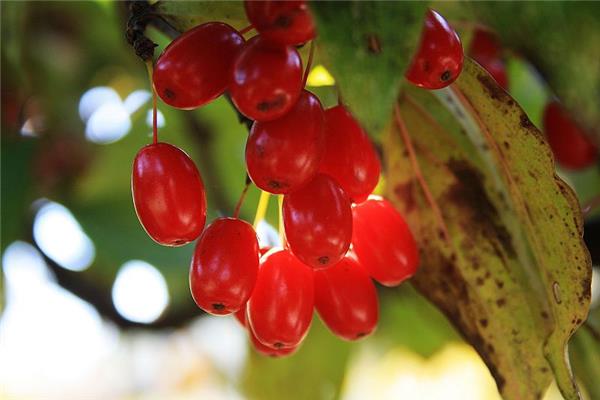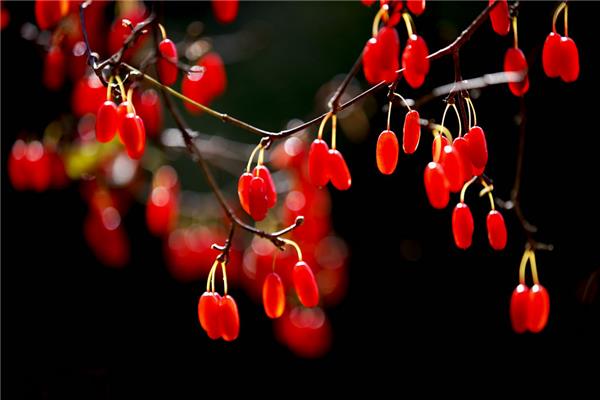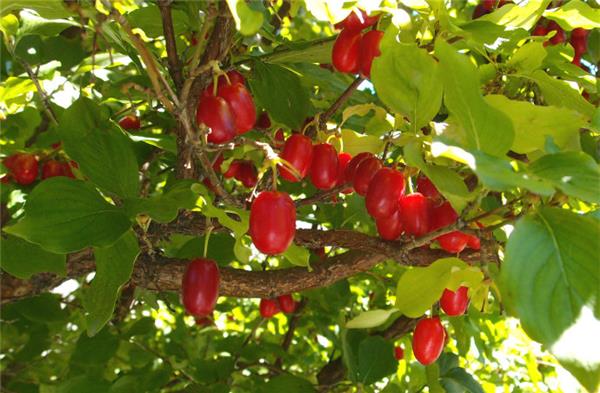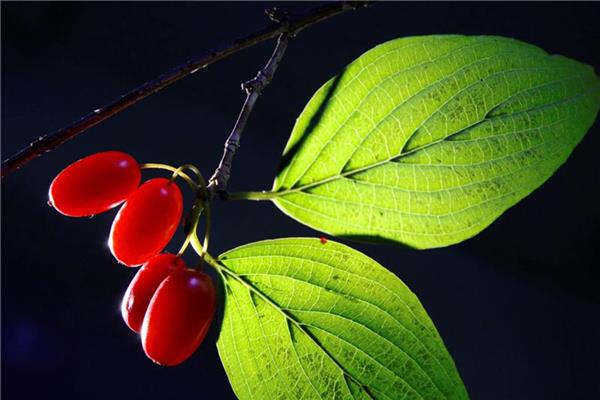Matters needing attention in planting and maintenance of Cornus officinalis and control of diseases and insect pests
Cornus officinalis is a kind of plant with both ornamental value and medicinal value, because it is born in mountainous areas, so it is also called "Cornus officinalis". It is a kind of plant with high breeding value.

Dietotherapy effect of Cornus officinalis
The taste is sour, astringent and lukewarm. Return to the liver and kidney meridians. The quality is smooth and astringent.
1. Tonifying the kidney and benefiting dry, astringent essence to stop the legacy. This product is sour and astringent and has the effect of nourishing liver and kidney and strengthening kidney astringent essence. It is suitable for treating symptoms such as sore waist and knees, spermatorrhea, vertigo tinnitus and menorrhagia caused by deficiency of liver and kidney.
two。 Restrain sweat and take off. Urination frequency, five more diarrhea, deficiency sweat more than, collapse leakage, palpitation palpitation.
3. This product is sweet and sour, warm and moist, mainly into the liver and kidney, can not only benefit essence, but also help yang, is longer than astringent Xiajiao, and is an important medicine for deficiency of liver and kidney and unstable lower yuan.
4. Food: this product is compatible with Platycodon grandiflorum, Fangfeng and self-defense.
Dogwood practice guidance
This product in large dose (30-60g) can be used to treat the syndrome of sweating and dying Yang. It can be used with ginseng and aconite.
Where the liver and kidney essence and blood deficiency, symptoms see dizziness, tinnitus and deafness, waist and knees sour and soft, bone steaming hot flashes, can be compatible with cooked ground, yam, moutan, etc.; where kidney loss, seal loss, semen, slip, can be compatible with dodder, Schisandra, dragon bone, oyster, etc.; where lung and kidney qi deficiency, Wei yang is not solid, deficiency sweat, can be compatible with ginseng, Radix Astragali, Radix Paeoniae Alba, Schisandra chinensis, etc.

Matters needing attention in planting and maintenance of Cornus officinalis
The excellent seed-collecting mother trees with strong growth and no diseases and insect pests were selected and began to be collected around September when the seeds were fully mature. The seeds of Cornus officinalis have the characteristics of deep dormancy, hard core, containing a transparent mucus resin, impervious to water and air, affecting seed germination. Therefore, seed germination must be carried out before sowing. The treatment methods include chemical treatment method, stratification sprouting method, human feces and urine heap method, nursery surface burning method and so on.
The sandy loam soil with flat topography, fertile soil and good drainage is selected as the nursery land, which is ploughed deeply with sufficient bottom fertilizer in winter, and the base fertilizer is better with stable fertilizer and plant ash. Make a bed after shallow ploughing and raking before raising seedlings in spring. Soil disinfection should be carried out in the nursery land where mole cricket, grub and other underground pests are easy to occur. Propagation method of Cornus officinalis
Spring sowing is usually carried out after soil thawing from February to March, while autumn sowing is usually carried out before soil freezing from September to November. Using the strip sowing method, the row spacing is 20 to 30 meters, and the ditch depth is 4 to 5 meters. After watering and sowing in the ditch, the soil is covered with 2 to 3 meters and covered with wet grass.
The seedlings can emerge about 25 days after sowing, and when the seedlings are unearthed up to 70%, the covered grass on the seedbed should be removed 2 to 3 times. If the height of the seedling is more than 10 cm, the seedlings can be fixed and fertilized properly when the height is 20 cm. After the seedlings enter the fast-growing period in July, the management of fertilizer and water should be strengthened. In September, in order to accelerate its Lignification, we should stop applying nitrogen fertilizer and increase the application of phosphorus and potassium fertilizer. The seedlings can come out of the nursery when they are as high as 60 to 100 centimeters.

Control of Diseases and insect pests of Cornus officinalis
Dogwood borer, one of the most serious pests of dogwood is the dogwood borer, which is a caterpillar that tunnels into the trunk of a tree. Weak branches and old trees are the most prone to moths. If it is found that dogwood tree drops, it may be a more obvious symptom. Once these destructive pests such as moths are in the tree, they are difficult to eradicate.
Shell insects are nasty bugs that affect the growth of dogwood. They can secrete a sugary liquid called honey, which can cause leaf droplets in heavy rainfall. Large-scale infestation is more destructive than other pests. Using soap is an effective insecticidal treatment for this problem.
Tree aphids, aphids usually affect ornamental trees, they will absorb dogwood juice. They also secrete honey, which can be easily recognized. Neem oil is a good way to control aphids on trees, or you can use homemade organic control solutions.
Dogwood sap, not all dogwood problems are the result of pests and diseases. Cornus officinalis sap can also result in improper pruning. Sometimes Cornus officinalis is injured by other causes, such as storm damage. Because Cornus officinalis is known to have "bleeding", sap should be released from the wound. In addition, trim your dogwood earlier this summer to avoid injury and remove any weak or older branches.

In addition to large area open-air planting and breeding, Cornus officinalis can also be cultivated by cutting cuttings. This method can be used in pot culture, and it can also greatly improve the beauty of home.
Cornus officinalis can also be cultured by cutting cuttings, which can be used in pot culture, and it can also greatly improve the beauty of the home.
- Prev

Planting and Seedling cultivation and Pest Control techniques of Italian Poplar
Planting and Seedling cultivation and Pest Control techniques of Italian Poplar
- Next

How to make bonsai pile selection and maintenance of Finch Plum Bonsai
How to make bonsai pile selection and maintenance of Finch Plum Bonsai
Related
- Wuhan Hospital Iron Tree Blooming Result Was Instantly Frightened by the Gardener Master
- Which variety of camellia is the most fragrant and best? Which one do you like best?
- What is the small blue coat, the breeding methods and matters needing attention of the succulent plant
- Dormancy time and maintenance management of succulent plants during dormancy
- Minas succulent how to raise, Minas succulent plant pictures
- What are the varieties of winter succulent plants
- How to raise succulent plants in twelve rolls? let's take a look at some experience of breeding twelve rolls.
- Attention should be paid to water control for succulent plants during dormant period (winter and summer)
- Watering experience of twelve rolls of succulent plants
- Techniques for fertilizing succulent plants. An article will let you know how to fertilize succulent plants.

